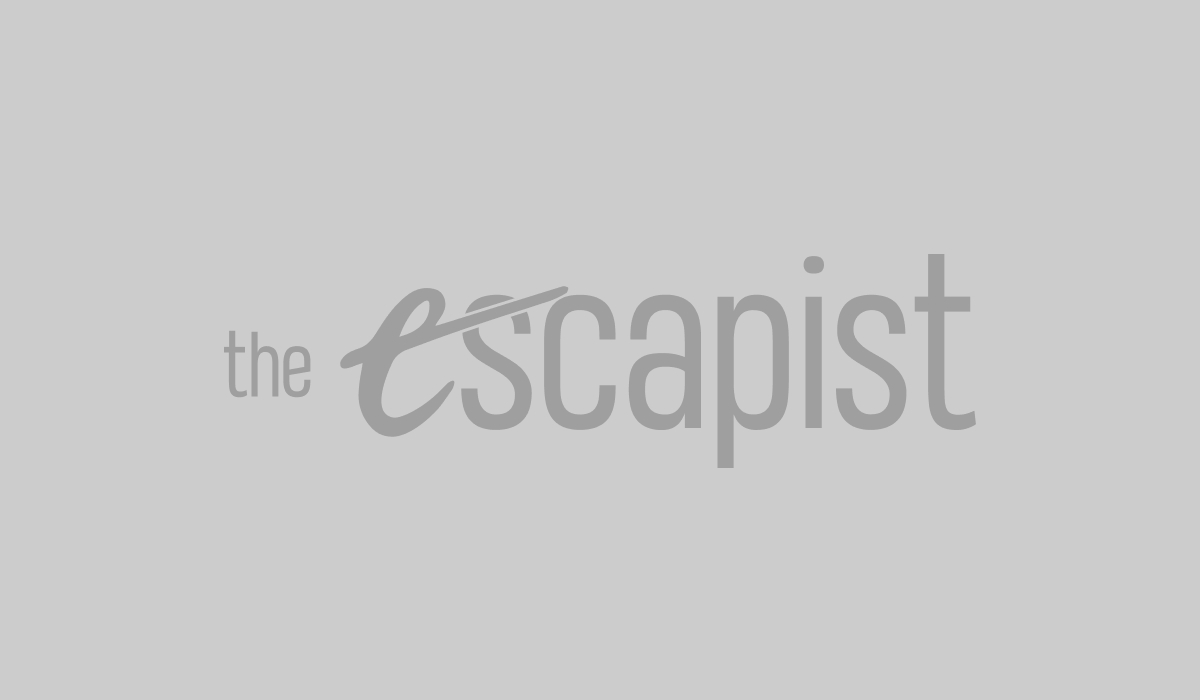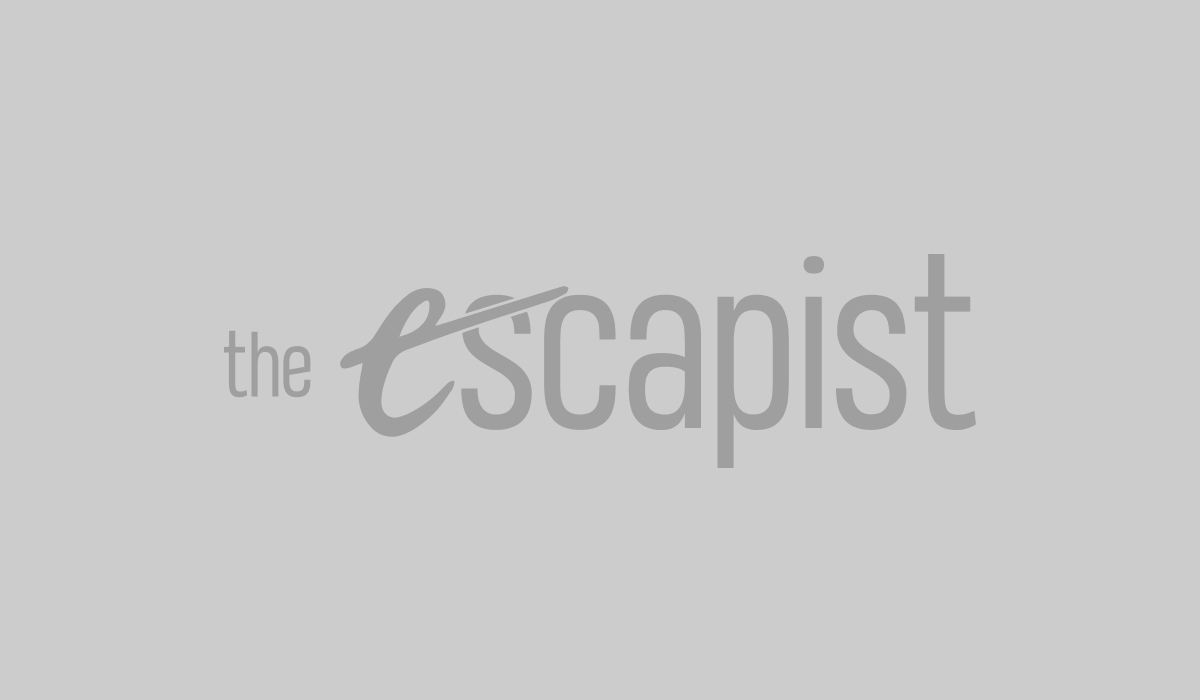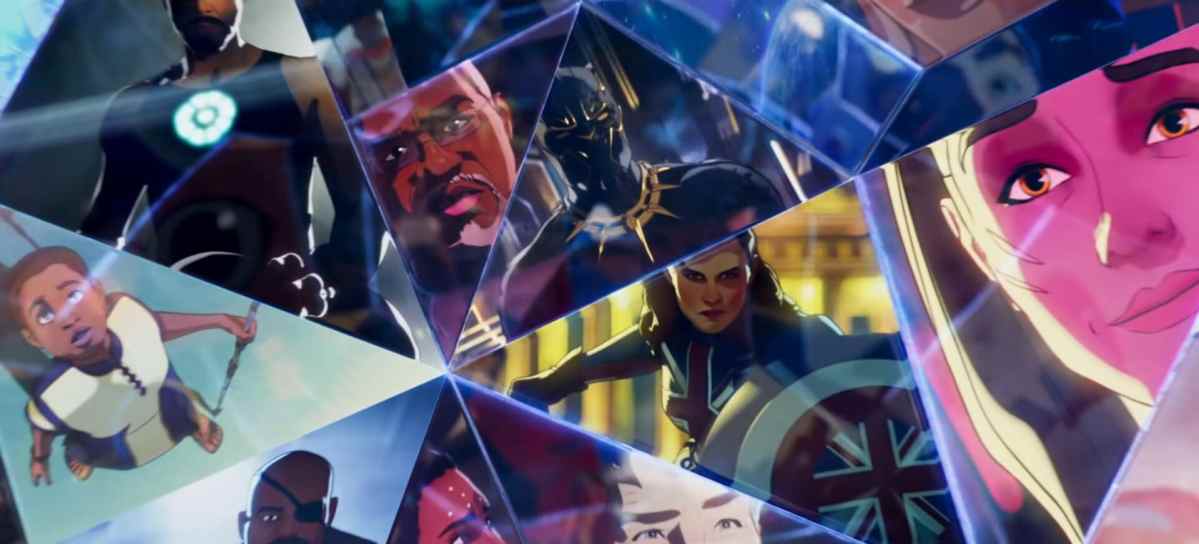What If…? marks a distinct departure for Marvel Studios in several ways.
Most obviously, it is the first major animated addition to the Marvel Cinematic Universe. While head writer A.C. Bradley has been quick to assert that the show is definitely “canon,” building off the end of Loki, it is also the first part of the shared universe to exist entirely outside of the established continuity. On a more basic episode-to-episode level, What If…? is also notable for being entirely episodic rather than serialized. Each of the three episodes shown to critics stands on its own.
What If…? spans the multiverse, with each episode taking place in an alternate version of the MCU where events unfolded differently. Sometimes the point of divergence is minor, and sometimes it is fundamental. Each episode builds outwards from a familiar setup, through the eyes of the all-knowing and all-seeing entity known as the Watcher (Jeffrey Wright). The Watcher can see across all of time and space, not only what has been but also what might be.
There are some constants across these three episodes. The animation is fine, with the production team opting for a cel-shaded style that prioritizes the likeness of the actors over the dynamism of the characters. Although it is a welcome contrast to the so-called “CalArts” style that dominates a lot of tie-in animation, it also feels strangely generic. The characters are not particularly expressive, and lip movements struggle to keep up with faster-talking cast members like Dominic Cooper.
There is a sense in which the animation style of What If…? is the two-dimensional equivalent to the universe’s shared visual and aural sensibility. It’s an approach that ranks consistency ahead of style. It’s disappointing that the company’s first foray into animation isn’t more adventurous. After all, animation affords all manner of possibilities that would be impossible to realize in live action. What If…? modestly settles for the logistical challenge of staging an action sequence at Brandenburg Gate.
What If…? employs the visual likenesses of the established actors. It casts the original performers where possible, lending the experience a deliberate verisimilitude. This emphasis on fidelity is a double-edged sword. Director Bryan Andrews acknowledged that trying to get all the original actors was “like herding cats,” so there are roles played by sound-alikes. However, pairing those mimics with the original cast members and careful likenesses lends the series an occasional uncanny quality.
There are obviously cases where the role is small, and the actor was likely unavailable at short notice. However, What If…? also makes a conscious choice to involve characters whose actors were never going to appear in a show like this. Steve Rogers and Natasha Romanoff have sizable roles in these adventures, but recasting the roles with Josh Keaton and Lake Bell is distracting when the rest of the cast is rounded out with actors like Hayley Atwell, Sebastian Stan, and Samuel L. Jackson.
Although the framing device of What If…? is lifted directly from multiple iterations of the classic comic book with the same name, the structure owes a large debt to classic television series like The Twilight Zone. Allowing for a brief cameo in a post-credits scene in Guardians of the Galaxy, Vol. 2, What If…? marks the proper introduction of the Watcher to the shared universe. Each standalone adventure opens and closes with a monologue from the character, laying out the episode’s themes.

There is something inherently interesting in this, in the idea that the Marvel Cinematic Universe is so well established and so perfectly formed that it’s possible to extrapolate alternate versions of it as easily as a show like Black Mirror might imagine a reflection of the real world. This is a fictional world that is so clearly defined that the casual audience can be expected to follow various jumping-off points from the previous decade of film and television.
The show’s format is refreshing, with each episode effectively conceptualizing an entire world within a half hour of runtime. Of course, these scripts are building off established characters and premises, but there’s an efficiency to the structure that is compelling. While none of the stories in What If…? are too radical or dramatic, there is something to be said for the production team’s ability to build a world and tell a story within a much tighter framework than a two-and-a-half-hour blockbuster.
As with any anthology show, the quality varies from episode to episode. The first installment is the weakest of the three shown to critics because it feels like the most modest. It is simply an abridged reimagining of an early entry in the shared universe that swaps the protagonist. It retains most of the plot beats, echoes many of the action sequences, and even lifts shots directly. It takes no risks. It’s the least imaginative take on the basic What If…? concept. It feels like market testing.
The two subsequent episodes are more successful because they are more ambitious. Obviously, a large part of the thrill of a concept like this is inviting the audience to experience the surprises first hand. However, the second and third episodes work because they scale upwards. They don’t just recycle or replay existing movies and action sequences; they mix and match aspects of the franchise’s continuity in a way that feels true to the comics that inspired the show.

The second episode crashes two of the more popular Marvel films together, in a way that manages to illuminate interesting aspects of both. After all, the core appeal of a concept like What If…? is wondering whether events could have gone differently if other characters were involved. How much of a story is driven by individual choices, and how much is shaped by the demands of the larger universe? It’s a worthwhile question, and the episode navigates it in fun ways.
The third episode does something similar, built around the delightful observation that several of the early entries in the franchise must unfold over the course of a single (very busy) week for the characters and imagining a cascading catastrophe. Again, it’s a concept that is designed to play into the strengths of both What If…? and the universe that it seeks to explore. In some ways, it is an escalation of the title question, expanded to encompass “… And Then…?”
What If…? is at its most frustrating when it feels hemmed in — whether by the limitations of its chosen animation style, by the decision to employ soundalikes for major actors who could not be convinced or were unable to reprise their roles, or by simply reiterating plots and beats that the audience has already seen. In contrast, as the title implies, What If…? works best when it embraces its imagination and plays with the possibilities of the concept.
What If…? will premiere on Disney+ on August 11. The season will consist of nine episodes in total.






Published: Aug 10, 2021 09:00 am